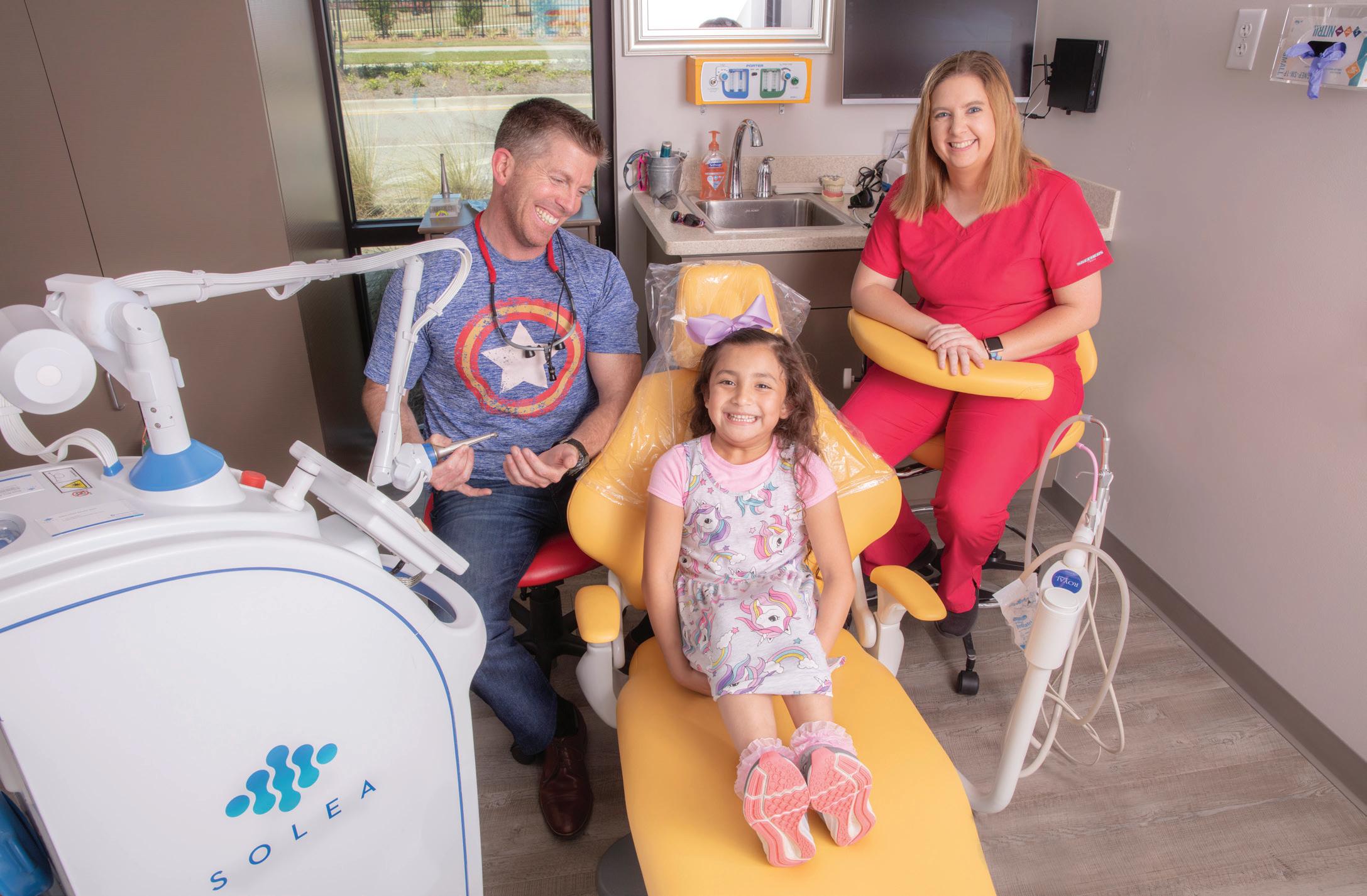the future is now



What’s new in pediatric
 BY JAMES F. MASON, DDS
BY JAMES F. MASON, DDS
“When did going to the dentist become such a cool experience?” These words came from the father of a beautiful 13-year-old girl named Claire who just finished her appointment. When Claire first started coming to the dentist several years ago, she reacted the way most young children do—with some anxiety, some nervousness, and a whole lot of wondering if it would hurt.
“I have seen dentistry, especially pediatric dentistry, change so much over the past few years, and wish it could have been that way for me,” Claire’s father said. “Just the technology alone and the implementation of it to the children’s advantage has made it so much easier to get the kids to want to come back.”
Claire and her family are talking about the revolution in pediatric dentistry that has taken place over the past few years across the country. The whole experience of going to the dentist has been changed into a brouhaha of pleasant experiences.
Even though in the past 50 years there has been a significant decline in cavities, dental decay continues to be one of the most common ailments in the U.S. Among children and adolescents, having a dental cavity is four to five times more common than having asthma. And because of this prevalence, much research has gone into how to combat this epidemic and help children in the best possible way.
Pediatric dentistry is now one of the hottest fields due to the change of culture. Dentophobia (the fear of dentists) is real, but
we are working to change this and believe the current technology is part of the solution.
New advances in preventing cavities, as well as how we fix them, has improved pediatric dentistry. Did you know that many cavities, when diagnosed early enough, can be reversible and never have to be drilled? Advances such as silver diamine fluoride (aka black fluoride), remineralization therapy, and lasers have revolutionized dentistry. The Solea® laser allows us to do routine procedures without having to give a “shot” and often without having to use the dental drill. In fact, Claire may never know the drill in her life.
Aside from general anxiety, the three things people are afraid of at the dentist are: pain, vibration, and noise. With the Solea laser, you do not have any of those; it pretty much feels like air and a little water blowing on your mouth and teeth. Over 98 percent of fillings can be done without any shots at all. When you don’t develop the fear and anxiety that most people have—when you don’t have the opportunity to become afraid of the drill and the

When you don’t develop the fear and anxiety that most people have— when you don’t have the opportunity to become afraid of the drill and the shots—then walking into the dental office is a whole different experience.

shots—then walking into the dental office is a whole different experience. Being able to stop cavities from getting any bigger, or “freezing” them, is a complete game-changer as well. If a child is afraid of the dentist, for whatever reason, why sedate them when treatment can be postponed using silver diamine fluoride until either that baby tooth falls out or the dental relationship is established so that the procedure can be done comfortably in the office?
Remineralization therapy enables dentists to use various modalities and therapies to “fix” cavities before they get too large. By controlling the pH of the mouth, some of the cavities your dentist points out can disappear or be prevented from advancing into the tooth. The ability to treat the cavities in this manner varies from person to person based on a number of factors. But those patients who can avoid getting a filling are all extremely thankful!
Simply put, the food children eat today is not the same as it was even a generation ago. The addition of hormones, pesticides, and antibiotics along with the consumption of sugary beverages has raised the number of cavities we see on a daily basis. But we are finally getting the tools we need to level the playing field against dental decay. With the advancements of digital dentistry, dentists can collaborate to
ensure the highest quality care. By working together, they can coordinate care like never before, making it easier on patients and maximizing their best possible outcome. Having the orthodontist take off the wires and then send the patient for a cleaning helps to prevent cavities, and coordinating with the endodontists (root canal dentists) for same-day treatment following trauma are just two examples of how dentists are able to work together to the greater benefit of the patient.
In the spirit of collaboration, Dr. Shane Harpham from Sea Island Smiles and I met recently to talk over different treatment ideas and to see how, by working together, we can both help children of the Lowcountry prevent cavities. This type of relationship combines resources and lets the patients receive the advantage of multiple practices. By utilizing a national database of doctors, we also have instant access to other pediatric dentists from around the country and even the world. The advice we all share: brush and floss daily and go see one of the talented dentists here in Beaufort County!
James F. Mason (Dr. Jim) is a board certified pediatric dental specialist. His practice, Adventure Pediatric Dentistry, is located at 337 Buckwalter Place Blvd. in Bluffton. Visit www.adventurepediatricdentistry.com or call (843) 815-6000 for more information.